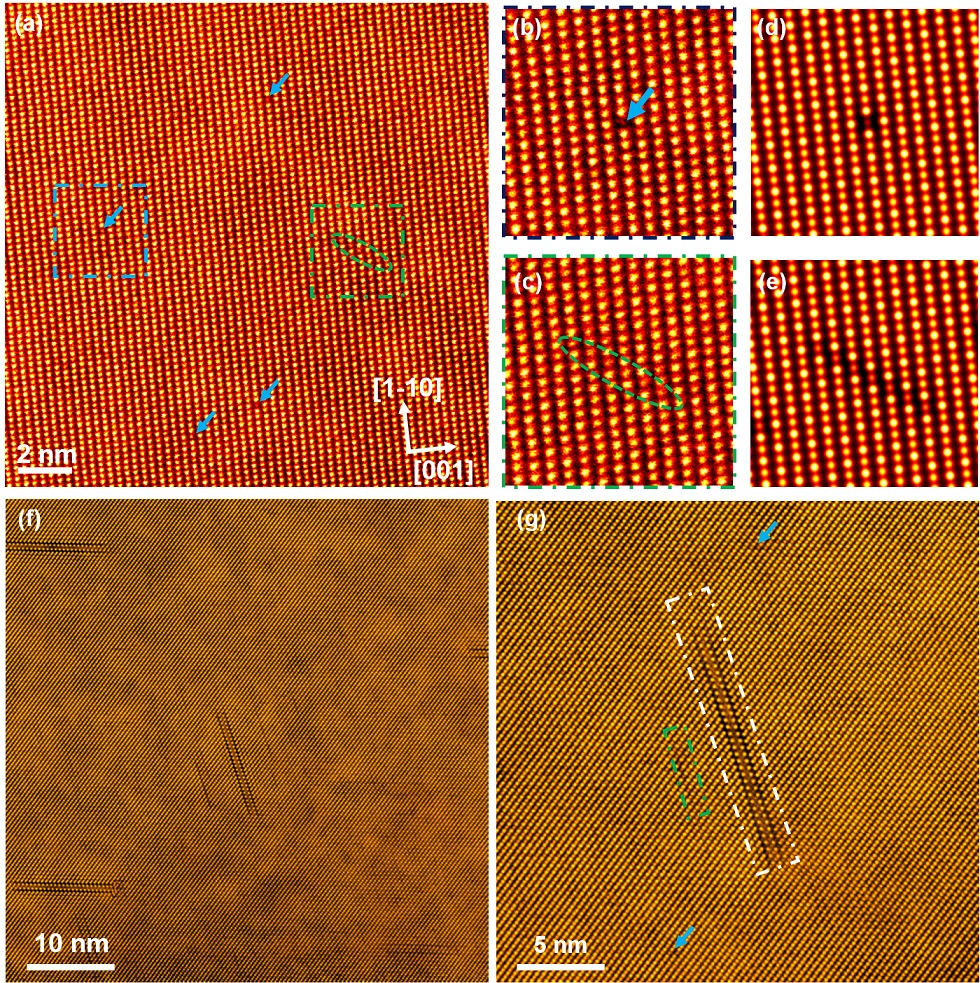Researchers unveil giant spin-splitting in room-temperature metallic antiferromagnet CrSb
2024-11-20Researchers achieve series of progress in field of thermoelectric materials and device physics
2024-09-14Researchers explore new horizons in spin space groups
2024-09-02Researchers make breakthrough in magnetic kagome superconductivity
2024-08-26Researchers reveal evolution of spin-orbit splitting near silicon isotope chains
2024-05-31Recently, a team led by Jiaqing He (Chair Professor of Physics, SUSTech) successfully introduced the 2D Van der waals defects into the eco-friendly SnTe-based thermoelectric (TE) materials for the first time to enhance the average ZT value, which shed light for future studies on SnTe and other intermediate-temperature bulk TE materials. The results, entitled as “Constructing van der Waals gaps in cubic-structured SnTe-based thermoelectric materials,” have been published in one of the most famous international journals Energy & Environmental Science.
TE materials can convert heat into electricity directly. Owing to the advantages of appropriate size, high steady-state operation period, zero emission, and silence, the prospect of TE devices is promising for both military and commercial applications. At intermediate temperatures, tin telluride (SnTe), an analogue of the traditional PbTe TE system, is deemed to be the hotspot of TE field because of its earth-abundant, nontoxic and environment-friendly characteristics. However, it is noted that the TE conversion efficiency is not determined by the peak ZT but by the average ZT (ZTave) over the entire operating temperature range, which is still the bottleneck for SnTe-based materials.
Figure 1. The predicted structure diagrams of (a) Ge-Sb-Te, and (b) Sn-Sb-Te. (c) Comparison of ZT values of our work and reported data in SnTe system. (d) The average ZT values from 300 K to 800 K of this work and the reported work.
In this work, the team alloyed Sb2Te3 with SnTe, innovatively forming dense short-range gap-like structure in the matrix. Additionally, after doping with tiny content of Rhenium, a kind of larger and deeper gap-like defect could be observed, indicating that this introduced-like gap structure could migrate and reconstruct, contributing to stronger scattering of phonons. The experimental results, together with density functional theory (DFT) calculating results, revealed that fabricated Sb2Te3(SnTe)n samples resulted in optimized band structure and reduced lattice thermal conductivity. By optimizing the doping content, researchers can balance the influence of electrical and thermal transport parameters and achieve the purpose of enhancing thermoelectric performance.

Figure 2. (a) The false-color STEM HAADF images of Sb2Te3(SnTe)8 sample, (b) the selected area of a 1D Sn vacancy line, (c) the selected area of a 2D Sn vacancy gap. (d) and (e) are the simulated results of Sn vacancy line and gap in (c) and (d), respectively; (f) The false-color STEM HAADF images of Sb2Te3(Sn0.996Re0.004Te)8 sample, (g) the magnified area of the extended gap-like structure.
Xiao Xu, a postdoctoral fellow of the Department of Physics and the Academy for Advanced Interdisciplinary Studies of SUSTech, is the first author. Juan Cui, a Ph.D candidate of SUSTech and the University of Hong Kong, and Yong Yu, a Ph.D candidate of SUSTech and the National University of Singapore, are the co-authors of the paper. Bin Zhu, a postdoctoral fellow, Yi Huang, a Ph.D candidate, Lin Xie, a research associate professor, and Di Wu, a former research associate professor (now a professor of Shaanxi Normal University) of Professor Jiaqing He’s team have given great support to the promotion of this work. SUSTech Chair Professor Jiaqing He is the corresponding author of this paper.
This work was supported by the National Natural Science Foundation of China, Natural Science Foundation of Guangdong Province, Shenzhen Basic Research Fund, SUSTech Core Research Facilities, and Center for Computational Science and Engineering at SUSTech.
Paper link:
https://doi.org/10.1039/D0EE02638G
Chinese news Link::
https://newshub.sustech.edu.cn/zh/html/202011/39175.html
English news Link::
https://newshub.sustech.edu.cn/?p=29040